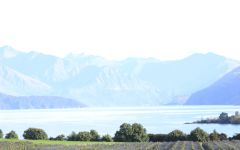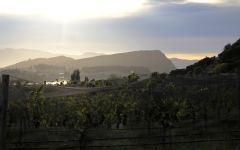Rippon Vineyard Mature Vine Pinot Noir 2013
-
Wine
Spectator



Product Details
Your Rating
Somm Note
Winemaker Notes
Professional Ratings
-
Wine Spectator
Spiced plum, licorice and loam flavors are complex, accented by bass notes of savory, earth, dried porcino and forest floor. The tannins add a sinewy backbone.
Other Vintages
2019-
James
Suckling -
Wine
Enthusiast
-
James
Suckling
-
James
Suckling -
Robert
Parker
-
James
Suckling -
Robert
Parker -
Wine
Enthusiast -
Wine
Spectator
-
James
Suckling -
Robert
Parker
-
James
Suckling -
Wine
Enthusiast
-
James
Suckling -
Wine
Spectator -
Wine &
Spirits
-
James
Suckling -
Wine
Spectator -
Robert
Parker









Rippon Vineyard was the dream of Rolfe and Lois Mills, pioneers of wine in Central Otago. Experimental vines were planted in 1974, but the bulk of the vineyard was planted in 1982 with Pinot Noir representing 40% of the vineyard. The first commercial vintage was produced in 1988. Winemaker Nick Mills, son of Rolfe and Lois returned to the property in 2002 after four years of work, study and life in Burgundy. He learned his “wine growing” skills at Domaine Jean-Jacques Confuron, Domaine de la Romanee-Conti, Domaine Albert Mann – as well as many others. Nick and his wife Jo, also a well respected winemaker in her own right, work with other members of the Mills family to make Rippon Vineyard & Winery a unique and successful family operation.
The family’s principle goal is to create vins de terroir; wines that are an accurate reflection of their surroundings. It is the micro-life in their soils which – in their ability to metabolize minerals into a form that vines can assimilate – are the link in between plants and the earth. This simple biology is the essential framework in producing a wine which is true to its soil and site. With this understanding comes an absolute respect for the land and life therein and it is for this reason that Rippon is run biodynamically.

New Zealand Pinot Noir has jumped onto the world wine stage with recent but rapid growth in quality and recognition. Pinot Noir didn’t develop a significant presence in New Zealand until the late 1980’s, and production stayed small in the beginning. But plantings doubled between 2003 and 2013, quality jumped and the world took notice. This is partly due to the propogation of one specific clone, the Abel clone (named after the customs agent who discovered vine cuttings hidden in a boot) that is rumored to be originally from Burgundy’s famous, Domaine de la Romanee Conti.
Pinot Noir is grown throughout New Zealand, but the majority hails from the South Island. The most important North Island region is Wairarapa, near the southern tip. Here the thin, poor soils and frost danger keep yields low. But the long growing season and dramatic diurnal temperature shift lead to dry, earthy Pinot Noir wines that in good years, show terrific red fruit and lovely depth.
The South Island in New Zealand has three regions of great significance. Marlborough Pinot Noirs hail mostly from the Awatere Valley, which is slightly drier and cooler than the Wairau Valley. The grape is grown for both sparkling and still wines, with the latter showing improvement as the vines age. The Canterbury region is composed of small producers making handcrafted Pinot Noirs that show tantalizing promise. Finally, Central Otago in New Zealand is the world’s southernmost wine region. Summers here are short but extremely sunny and dry, with cold nights that preserve grape acidity. Otago Pinot Noir wines show earthy and herbal notes, as well as vivacious red fruit flavors that are as bright as they are ripe. It is unusual, in fact, to find a Pinot that is under 14% alcohol. Taken together, New Zealand Pinot Noirs offer a wealth of delightful options for fans of this variety.
